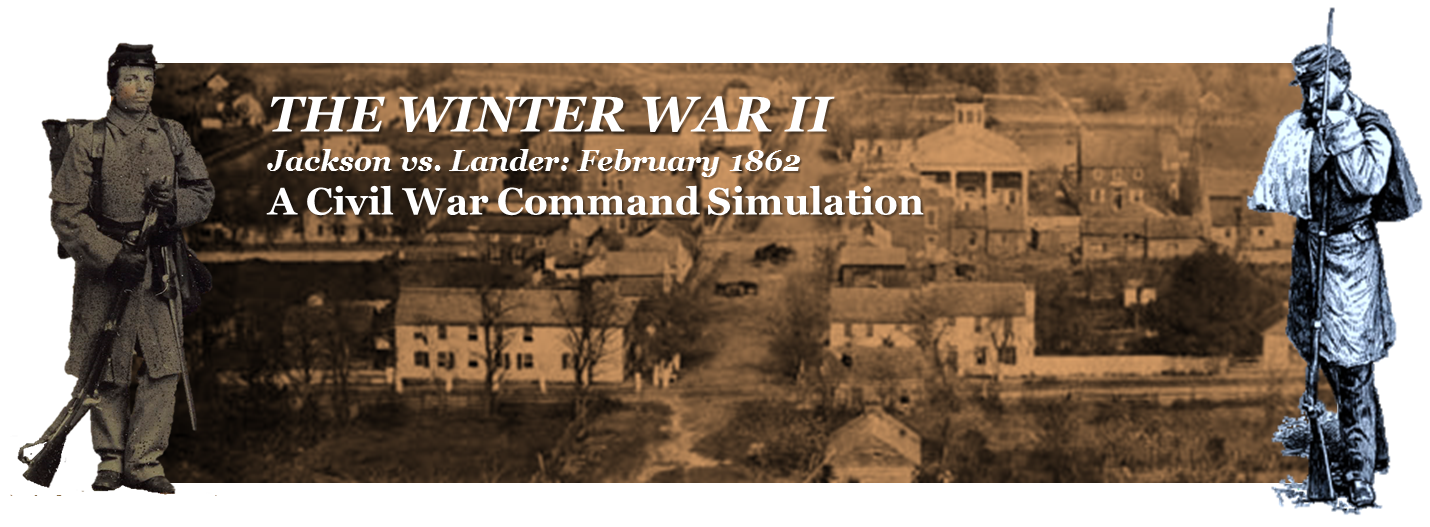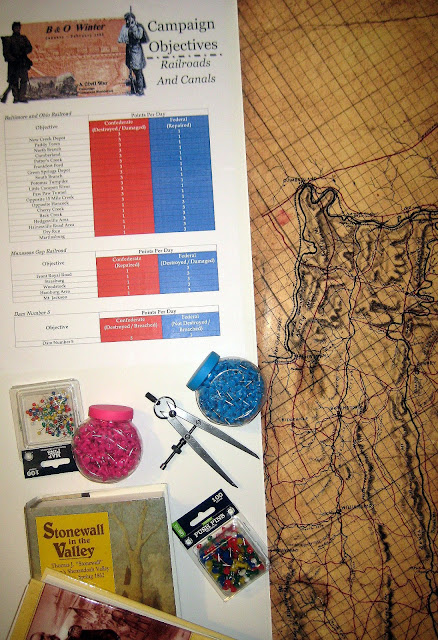On November 1st 1861, Benjamin Hawkes (Assistant Adjutant General of the Department of Harpers Ferry and Cumberland, wrote to Lieutenant General Winfield Scott, command of the Army of the United States. He reported increasing Union sentiment, as well as Brig. Gen. Benjamin Kelley's weak condition. (He was still recovering from a wound received at Philippi.)
 |
| Winfield Scott may have never read Hawkes' correspondence from Romney |
Hawkes enclose a proclamation by Kelley to the people of Hampshire County and the area surrounding Romney. It was a sort of carrot and stick approach, trying to encourage cooperation in the recently occupied area, while making it clear that attacks against supply lines, messengers and outposts would not be tolerated.
It is not clear whether or not Winfield Scott received the correspondence. He was retired from the army on the same day (without reduction of salary and benefits), and was replaced by Maj. Gen. George B. McClellan.
Kelley's proclamation shows his concern about supply and communication lines, which will be critical features in the B & O WINTER Command Simulation.
--------------------------------------------------------------------------------------------------------------------------
HDQRS. DEPT. OF HARPERS FERRY AND CUMBERLAND,
Camp Keys, Romney, Va.,
November 1, 1861.
Lieut. Gen. WINFIELD SCOTT, Commanding Army of the United States, Washington, D. C.:
DEAR SIR: Inclosed .you will find proclamation of the general to the people of Hampshire County and the Upper Potomac. I am happy to inform you that it is effecting great good among the people. The Union sentiment of this county is rapidly developing itself, and many of the citizens are coming in and availing themselves of the terms of the proclamation. The general being a Virginian himself, and a personal acqnaintance of many of the inhabitants, is enabled to exercise a salutary influence over them. The general arrived from New Creek this evening, and I am sorry to say is not very well. I hope he will be better in a day or two.
And am, with great respect, yours, & c.,
BENJ. F. HAWKES~ Captain, and Assistant Adjutant- General.
[inclosure.]
To the People of Hampshire County and the Upper Potomac:
My object in addressing you is to give you assurance that I come among you, not for the purpose of destroying you, but for your protection in all your rights - civil, social, and political. I am here, backed by the forces of the United States, to protect you in the rights of property as well as person, so long as you are peaceful citizens and loyal to the Government of the United States, the flag of which has so long and so well protected you, and under the folds of which you have lived long, happily, and prosperously. But if you attempt to carry on a guerrilla warfare against my troops, by attacking my wagon trains or messengers, or shooting my guards or pickets, you will be considered enemies of your country, and treated accordingly. I shall put as few restrictions upon the ordinary business of the people as possible, and will give as free ingress and egress to and from Romney as the safety of my troops will admit. Citizens who have fled, under an erroneous belief that they will be imprisoned or killed, are invited to return to their homes and families, assured that they shall be protected whenever they give evidence that they will be loyal, peaceful, and quiet citizens. Every reasonable facility will be given the people to seek a market on the railroad for their surplus produce, an(l to obtain supplies of merchandise, groceries, & c. All persons who have taken up arms against the Government are hereby required to lay them down, return to their homes, and take an oath of allegiance to support the Government of the United States. By so doing they will receive all the protection due to an American citizen.
B. F. KELLEY, Brigadier-General. ROMNEY, VA.,
October 28, 1861.
[From Official Records - Volume V, Chap. XIV, pp. 638-639]













